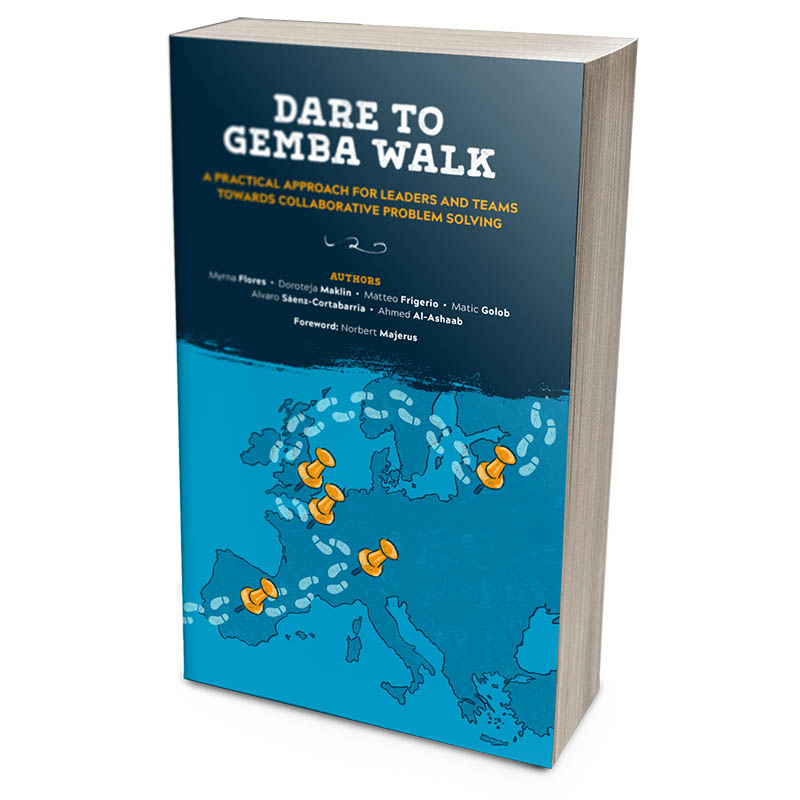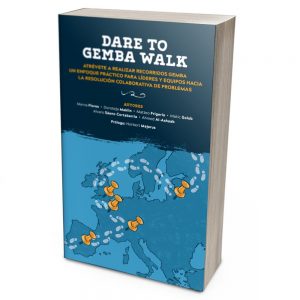Description
DARE TO GEMBA WALK BOOK SUMMARY
The DARE2GEMBA methodology is the result of a two-year collaborative research project carried out by the Lean Analytics Association (LAA), gathering direct insights from Gemba-based learning experiences across nine companies located in Europe and the American continent, together with a survey responded by 60 organizations from 18 different industries around the world.
Gemba (現場) is the Japanese term for “actual place” often used in business to identify the place where the value is created. This term is used to stress that improvements require the direct observation of current conditions where work is done. The main objective of this research project was to investigate how leading organizations across different industries have successfully structured and embedded the Gemba Walk practice in order to share this breakthrough niche knowledge to foster the purpose of collective improvement and open innovation.
This book looks forward to transporting readers to nine organizations located in different countries, which have shared their experiences about how they kicked off and carry out Gemba Walks, impacting their teams by empathizing with their employees’ problems and by engaging them in solving such problems in a collaborative way. It is not intended for lean experts only; on the contrary, it aims to inspire all leaders around the globe to kick off Gemba Walks towards continuous improvement.
The first chapter provides a brief summary about how Lean Thinking has evolved since its roots back in the 1980s, from focusing originally on providing value mainly to customers, to also delivering value to employees and society as a whole. It also explains the Lean Transformation Model, which is used as the framework to identify and consolidate the different practices discovered from these cases. After providing a chapter for each of these nine organizations, the book then includes three key chapters which provide the trends, the 40 identified lean practices that support the Gemba Walk implementation, and the DARE2GEMBA methodology developed by the LAA following several years of research and collaboration.
The DARE2GEMBA Methodology proposes a four-step human-centered approach to kick off or enrich the Gemba Walk lean practice. The first step, “Discover”, looks forward to developing empathizing skills to allow leaders to understand the pains and gains customers, employees and leaders experience. Through empathy, leaders will be able to put themselves in their shoes and connect with how they might be feeling about their problems, circumstances or situations. To conclude this first step, enough insights should be available to define an initial vision, including the key problems associated to proposed goals, metrics, targets and key stakeholders. The second phase, “Assess”, enables organizations to identify the progress and current readiness level in regard to the behaviors and lean practices, as enablers for a continuous improvement mindset. The Shingo model has been used to identify key behaviors to support leaders, facilitators, and employees to achieve Operational Excellence. During the third phase, a “Roadmap” is developed in a collaborative way, defining actions which target, in the best possible way, the problems and needs discovered after empathizing with customers, employees and leaders. It is also suggested to carry out a business case in order to document the lessons learned obtained up to this phase and quantify the expected impact. Last but not least, the fourth phase, “Execute”, provides a detailed guideline with the key steps suggested to be performed before, during and after the Gemba Walks. It also proposes the integration of four systems: 1) the Visual Performance Management System, 2) the Knowledge Management System, 3) the Leader Standard Work System, and 4) the Continuous Improvement System.
We are convinced that Gemba Walks are a powerful practice that is 100% connected to the vision of what Lean Thinking is all about: creating a culture in which leaders are committed to engaging everyone in the organization to continuously challenge and improve the current way of working throughout collaborative problem-solving.



